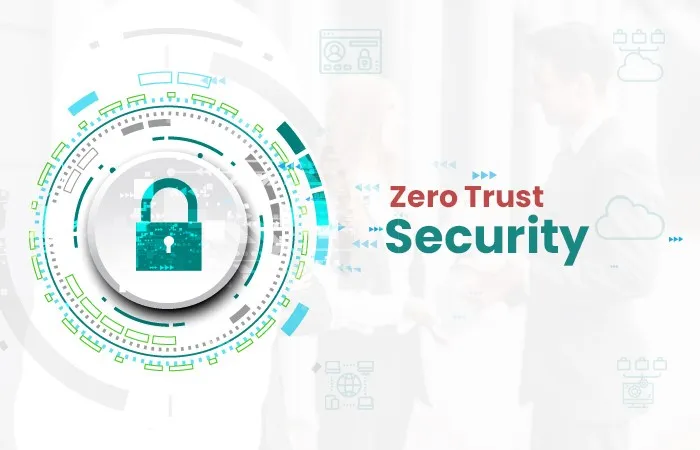Copyright thebftonline

By Abubakari Saddiq Adams In a time when cyberattacks are more sophisticated and damaging than ever, organizations worldwide are embracing a new approach to cybersecurity: Zero Trust Architecture. Unlike traditional security models, which rely on securing a defined network perimeter, Zero Trust assumes that threats can come from anywhere and no entity, whether inside or outside the network, should be trusted by default. Understanding the Zero Trust Model Zero Trust challenges the traditional concept of trust within a network. In the past, once users and devices passed perimeter defenses, they were granted access without further scrutiny. But as remote work, cloud computing, and mobile devices have become the norm, these boundaries are no longer sufficient. Zero Trust operates on a “never trust, always verify” principle, demanding ongoing verification of all entities accessing the network. It requires continuous monitoring and strict access controls to protect data and systems effectively. The Zero Trust framework includes a set of core principles: Verify Explicitly: Every request for access, whether from a user or device, must be authenticated and authorized based on contextual data, such as the user’s identity, location, device health, and behavior. Use Least Privilege Access: Users and devices are only given the minimum access necessary to perform their function, limiting exposure if credentials are compromised. Assume Breach: The model assumes that any access could potentially be a threat. This proactive mindset means that security teams are always prepared to detect and respond to unauthorized activity. Key Components of Zero Trust Implementing Zero Trust requires a combination of advanced technologies and structured policies that work together to protect data and systems. These components include: Identity and Access Management (IAM): IAM is the backbone of Zero Trust, enforcing user identity verification and implementing multi-factor authentication (MFA). By ensuring users are who they claim to be, IAM helps prevent unauthorized access from compromised credentials. Least Privilege Access and Role-Based Control: This approach restricts users and devices to the specific resources they need to perform their tasks. Organizations use role-based control policies to enforce access limitations, significantly reducing the potential damage of a compromised account. For example, a marketing employee would only have access to marketing-related systems and data, keeping critical assets safe from misuse. Network Segmentation and Micro-Segmentation: Zero Trust divides the network into smaller zones or segments, each with its own security rules and access limitations. Micro-segmentation takes this further by securing individual applications or data resources. This creates multiple containment layers within the network, limiting the attacker’s ability to move laterally if they gain access to one area. Device Health and Security Posture: Zero Trust assesses the security of every device before allowing it to access network resources. Policies ensure that devices are up-to-date, free of malware, and compliant with security standards, reducing the risk of an infected or outdated device causing a breach. Threat Detection, Response, and Continuous Monitoring: Continuous monitoring and real-time threat detection help identify unusual patterns or behaviors that may signal an attack. AI and machine learning can analyze large volumes of data and spot anomalies, enabling a rapid response to potential threats. By maintaining visibility into all access and activity within the network, organizations can detect and respond to breaches more effectively. Data Security and Encryption: Zero Trust mandates data protection both in transit and at rest. Encryption and strict access controls ensure sensitive information remains secure even if unauthorized access occurs. This is especially vital in regulated industries like finance and healthcare, where data privacy and compliance are paramount. Why Organizations Are Turning to Zero Trust The shift to Zero Trust is driven by the modern cyber threat landscape, where attackers continuously evolve their tactics. Recent high-profile breaches have demonstrated the vulnerabilities of traditional security models, especially in today’s hybrid work environments with remote users and cloud services. The Zero Trust model offers a more resilient approach by securing every layer and access point, making it much harder for attackers to gain control of critical assets. The Role of Zero Trust in Ghana’s Cybersecurity Future In Ghana, interest in Zero Trust is growing as organizations recognize the need for robust security frameworks. Institutions in finance, telecommunications, healthcare, and government are beginning to see Zero Trust as a key step in protecting critical data and infrastructure. With digital transformation efforts accelerating across the country, adopting Zero Trust can help organizations in Ghana to guard against rising cyber threats. The Ghana Investment Fund for Electronic Communications (GIFEC) and other local initiatives are promoting digital access and inclusion. But as more people gain internet access, there’s a parallel need to ensure these digital connections are secure. Zero Trust’s adaptable model offers an effective way to protect Ghana’s digital future by strengthening cybersecurity across industries and sectors. Implementation Challenges and Considerations Adopting Zero Trust requires a structured, phased approach due to its complexity. Organizations must integrate new technologies, update legacy systems, and train employees on best practices. This shift can be resource-intensive, requiring careful planning and significant investment in infrastructure and personnel. Moreover, cultural and organizational changes are often needed to fully embrace the principles of Zero Trust, as employees must be educated about their roles in maintaining cybersecurity. The implementation journey might also involve challenges around privacy, as Zero Trust relies on constant monitoring and data analysis. Balancing security with user privacy is essential, and organizations must be transparent about monitoring policies and data collection practices. A Safer Digital Future As cyber threats continue to advance, Zero Trust offers a proactive and adaptable approach to cybersecurity. By focusing on identity, continuous verification, and strict access controls, Zero Trust enables organizations to guard against today’s most sophisticated attacks. Ghana, as it embraces digital transformation, stands to benefit significantly from Zero Trust principles, helping protect the nation’s digital economy and ensuring safer online experiences for all. Zero Trust isn’t just a new security trend; it’s a fundamental shift in how organizations view trust, access, and threat response. By adopting this architecture, businesses and governments can protect their most valuable assets, from sensitive customer data to critical infrastructure, building a secure foundation for the future of Ghana’s digital landscape. Abubakari is a Business IT & IT Legal Consultant with a focus on IT governance and cybersecurity | Member, IIPGH. For comments, please contact +233246173369/+233504634180 or email Abubakrsiddiq10@gmail.com



